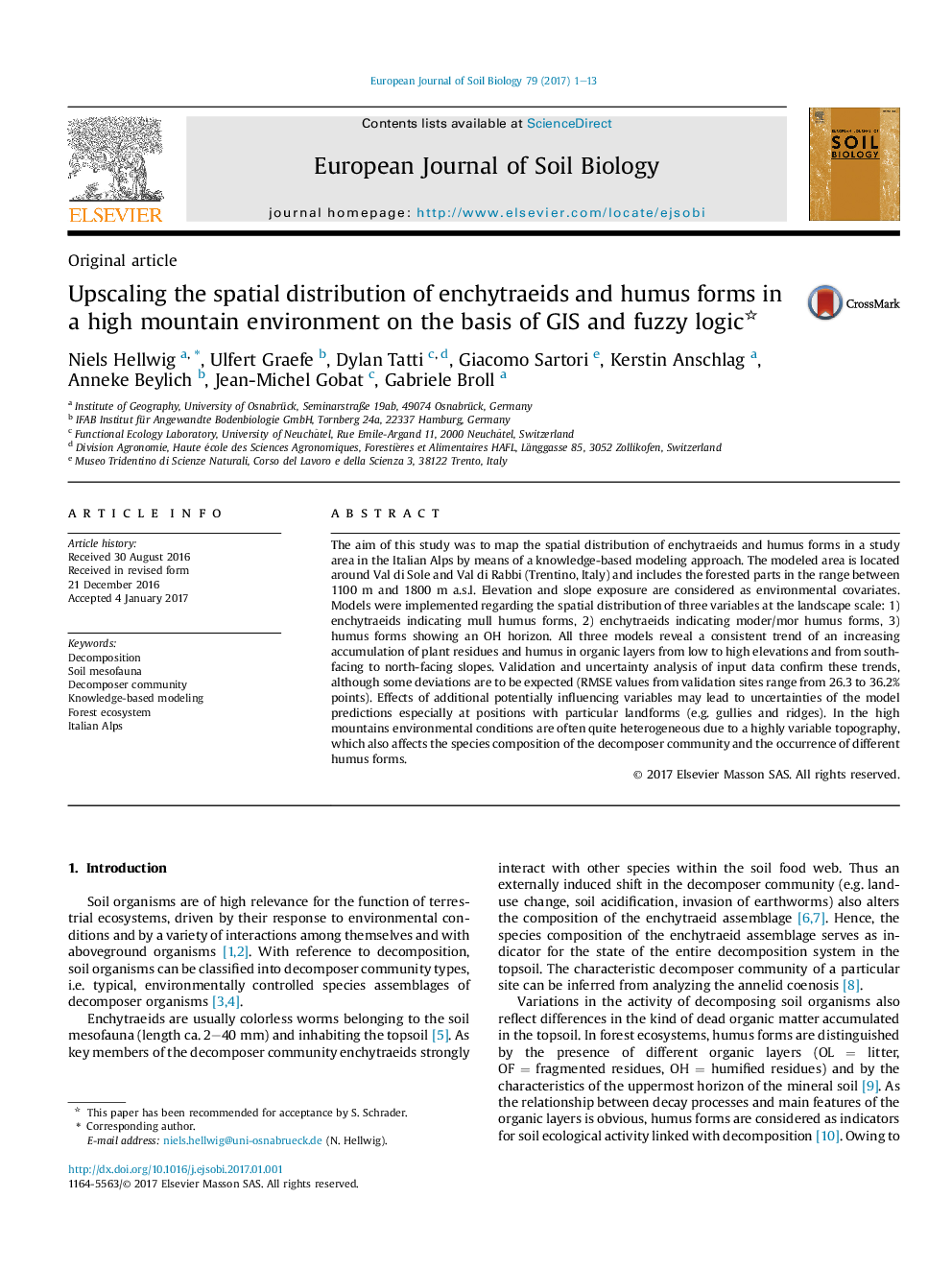| Article ID | Journal | Published Year | Pages | File Type |
|---|---|---|---|---|
| 5744246 | European Journal of Soil Biology | 2017 | 13 Pages |
Abstract
The aim of this study was to map the spatial distribution of enchytraeids and humus forms in a study area in the Italian Alps by means of a knowledge-based modeling approach. The modeled area is located around Val di Sole and Val di Rabbi (Trentino, Italy) and includes the forested parts in the range between 1100Â m and 1800Â m a.s.l. Elevation and slope exposure are considered as environmental covariates. Models were implemented regarding the spatial distribution of three variables at the landscape scale: 1) enchytraeids indicating mull humus forms, 2) enchytraeids indicating moder/mor humus forms, 3) humus forms showing an OH horizon. All three models reveal a consistent trend of an increasing accumulation of plant residues and humus in organic layers from low to high elevations and from south-facing to north-facing slopes. Validation and uncertainty analysis of input data confirm these trends, although some deviations are to be expected (RMSE values from validation sites range from 26.3 to 36.2% points). Effects of additional potentially influencing variables may lead to uncertainties of the model predictions especially at positions with particular landforms (e.g. gullies and ridges). In the high mountains environmental conditions are often quite heterogeneous due to a highly variable topography, which also affects the species composition of the decomposer community and the occurrence of different humus forms.
Keywords
Related Topics
Life Sciences
Agricultural and Biological Sciences
Soil Science
Authors
Niels Hellwig, Ulfert Graefe, Dylan Tatti, Giacomo Sartori, Kerstin Anschlag, Anneke Beylich, Jean-Michel Gobat, Gabriele Broll,
